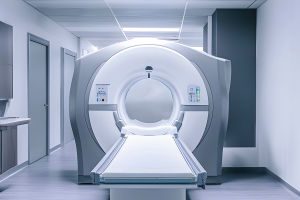Hey Lykkers! Ever looked up and spotted a drone flying across the sky and wondered, "Is there someone controlling it?" Well, not always! Some drones fly all by themselves — no joystick, no pilot — just pure tech magic.
Welcome to the world of autonomous drones, where science fiction becomes real-life science. Let’s break it down and explore how these high-flying machines think, act, and reshape the world around us.
What Exactly Is an Autonomous Drone?
Simply put, an autonomous drone is a flying robot that doesn’t need a human constantly guiding it. Unlike regular drones, which require a remote pilot, autonomous drones can plan, navigate, and make decisions using built-in systems — kind of like a self-driving car, but in the sky.
These drones rely on a mix of AI (Artificial Intelligence), GPS, sensors, computer vision, and machine learning algorithms to “see” their surroundings, avoid obstacles, and carry out tasks — all on their own.
How Do They Work?
Here’s a simple version of what’s going on behind the scenes:
1. Sensors and Cameras: Autonomous drones are equipped with LIDAR (laser-based sensors), infrared cameras, ultrasonic sensors, and sometimes even thermal imaging to detect obstacles, terrain, and objects.
2. Navigation System: With GPS and inertial measurement units (IMUs), they know exactly where they are and how fast they’re moving.
3. Onboard Computer (AI Brain): The drone processes all incoming data in real-time. Using AI, it makes quick decisions — like which route to take, how to avoid a tree, or when to hover.
4. Machine Learning: Some advanced drones are trained to recognize specific targets or patterns, and they get better over time, just like humans learning from experience.
Real-World Examples You’ll Find Impressive
Agriculture: Some companies have developed autonomous drones that fly over crops, spraying fertilizer with pinpoint accuracy or scanning for diseases using multispectral cameras. Farmers get real-time insights and healthier yields.
Delivery Services: Zipline is testing drone deliveries. Zipline, for example, uses autonomous drones to deliver medical supplies in remote areas of Rwanda and Ghana — saving lives with high-speed precision.
Search and Rescue: In disaster zones, autonomous drones can fly into dangerous areas to find survivors, map terrain, and deliver supplies — even when communication systems are down.
Industrial Inspection: Oil rigs, power lines, and solar farms are now being monitored by autonomous drones that can identify issues without putting human inspectors at risk.
Why This Tech Matters
These drones are not just cool — they’re transforming industries. In agriculture, they reduce labor and chemical waste. In logistics, they promise faster and greener deliveries. In emergencies, they save lives. All while collecting tons of data that can improve future decision-making.
And as they evolve, autonomous drones are getting safer, smarter, and more affordable. This means more people — from farmers to firefighters — can use them for real-world benefits.
A Quick Look at the Challenges
It’s not all smooth flying, though. Weather, battery life, airspace regulations, and cybersecurity are still big hurdles. Plus, integrating them into existing air traffic systems is a work in progress. But researchers and tech companies are hard at work addressing these issues.
The Bottom Line
Lykkers, autonomous drones are more than flying gadgets — they’re flying problem-solvers. From helping farmers grow more food to delivering medicine where it's needed most, they’re making a real impact.
And as the science continues to evolve, who knows? One day you might just get your coffee delivered by a drone buzzing right to your doorstep — no human pilot required.
Stay curious, and keep looking up!


